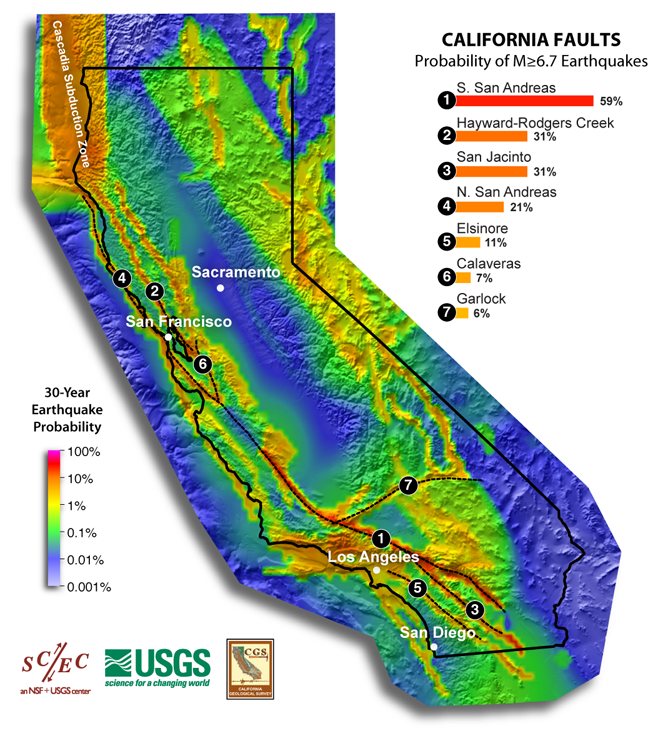
The Richter scale, developed by Charles Richter in 1935 to measure quakes in Southern California, has fallen out of fashion. 2) The Richter scale isn’t the only measurement game in town anymore An earthquake within a tectonic plate has fewer telltale signs than those that occur at fault lines, he added. “Our understanding of these within-plate earthquakes is not as good,” said Stanford University geophysics professor Greg Beroza. These risks are harder to detect and measure. However, earthquakes can also occur within tectonic plates, as pressure along their edges cause deformations in the middle. Scientists understand these kinds of earthquakes well, which include those stemming from the San Andreas Fault in California and the East Anatolian Fault in Turkey. When the former overwhelms the latter, the earth shakes as the pent-up energy dissipates. As plates move, pressure builds up across their boundaries, while friction holds them in place. The specific surfaces where parcels of earth slip past each other are called faults. The places on the planet where one plate meets another are the most prone to earthquakes.

They can also slide on top of each other, a phenomenon called subduction. That means tectonic plates jostle each other over time. These blocks, called tectonic plates, lie on top of the earth’s mantle, a layer that behaves like a very slow-moving liquid over millions of years. 1) What causes earthquakesĪn earthquake occurs when massive blocks of the earth’s crust suddenly move past each other. In light of the recent disasters, here’s a refresher on earthquakes, along with some of the latest science on measuring and predicting them.

The rumbling earth can easily catch people off-guard, worsening the ensuing death and destruction. While scientists have drastically improved their understanding of where earthquakes are likely to occur, forecasting when one will occur is still impractical. A magnitude 7.0 quake rocked the Aegean Sea between Turkey and Greece in 2020. Last November, Turkey suffered a magnitude 5.9 quake. Larger quakes are less frequent, but still a regular occurrence. Two major fault lines cross Turkey and trigger shocks on a regular basis. The quakes killed more than 50,000 people and toppled more than 6,600 buildings in the region. Another quake with a magnitude of 7.7 rocked the region a few hours later. In February, a huge magnitude 7.8 earthquake rattled across Turkey and Syria early Monday morning.

Many of Morocco’s centuries-old buildings suffered extensive damage.īut earthquakes can still be deadly in earthquake-prone regions. Since earthquakes are uncommon in the region, few structures are designed to withstand them and residents have little experience responding when a quake occurs. The stress from the collision then suddenly releases in the form of an earthquake. Morocco’s recent earthquake was due to a phenomenon called a “ reverse fault” where tectonic plates slowly collide and cause the Earth’s crust to thicken. The Mediterranean region is seismically active, according to the US Geological Survey, though such strong earthquakes are rare in North Africa. Officials report more than 2,100 people have died and expect the death toll to rise as rescuers reach remote, mountainous afflicted areas. A powerful magnitude 6.8 earthquake rocked Morocco Friday night, the largest tremor to hit the country in at least 120 years.


 0 kommentar(er)
0 kommentar(er)
